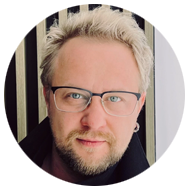What is the fundamental difference between the roles of specialists of different levels, — Kirill Romanovsky, designer, former head of design, told in his column Mail.Ru Group and Kaspersky.
Kirill Romanovsky
Each specialist has his own unique background, history and, of course, the vector of development. The task of the manager is just to help the employee understand himself better, determine the horizons of development, choose the right path.
To convey the principles of career development to everyone in the team and organize a regular assessment is a challenge. It is necessary to explain — and what is the difference between grades, and how an employee can move to the next one, and how to grow up to Senior.
If there is no answer, you will not be able to help, and a document with an individual development plan will turn into a useless piece of paper.
Just working on grading systems made me think about how to briefly and clearly formulate what is the difference between specialists of different levels.
The difference is not measured in years. The main drivers of growth are completely different. Here, the presence of expertise in several disciplines (T-shaped), soft skills and the level of control (ownership) comes out on top.
Based on this approach , I came to the following characteristic of grades:
- Junior – Aware (awareness);
- Middle – Follow;
- Senior – Influence;
- Staff – Drive (maintenance);
- Principal – Strategize/Raise the bar (management).
Junior
The foundation for the development of junior specialists is understanding:
- team values;
- common processes;
- fundamentals of discipline.
Without this knowledge, it will be difficult for a novice specialist to launch a career. Therefore, the best definition of the role of a Junior—level specialist is awareness.
In addition, the importance of soft skills should not be overlooked. Novice specialists who understand the importance and value of feedback, actively participate in providing and receiving it, as well as actively participate in discussions and collaboration, significantly accelerate their professional growth.
Middle
Specialists who have moved to the Middle position already have sufficient practical skills to confidently follow all the processes in the company. Actually, that's why the word Follow perfectly describes this level.
The basic knowledge of a specialist acquires practical experience. There is an increase in both expertise and autonomy.
At this level, the specialist confidently resorts to feedback as a tool, conducts research, contributes something to the system himself, justifies his decisions to the team and formulates hypotheses.
With experience comes new knowledge. It is at this moment that the growth of specialists begins and in a multifunctional plan, they begin to understand more about related areas of work. That is, their T-shaped expertise is growing.
Senior
At the previous level, the specialist began to grow knowledge in related fields (it does not matter in which, but, as a rule, management becomes one of these areas). At some point, this knowledge reaches a critical mass and the focus shifts from following to influencing processes, teams or the product.
That is why it is appropriate to talk about influence as a definition of a role.
The specialist becomes a fully autonomous unit with a wide range of T-shaped skills and demonstrates a high level of control over the product or processes (ownership).
Senior-level specialists always bring new experience and a new perspective, they are able to influence the strategy, whether it is a product or brand strategy. Such specialists become full-fledged partners for a product manager or marketer.
Staff
So, a person has experience, knowledge, autonomy, partnership and influence. What's next?
- Experience, knowledge and influence lead to mentorship. The specialist begins to be an active source of changes in the team and the product. He organizes the exchange of knowledge within the team.
- Partnership, influence and autonomy are transformed into co-leading. This is the next step. The specialist works as a full partner with several teams at once and acts in different roles. It is from this point in the career branch that it is best to switch to the managerial path.
The word drive perfectly illustrates the transition from autonomy to active collaboration, involvement and facilitation. This role is strategically important for the team because it accelerates its development.
Principal
From the Senior level, knowledge of the T-shaped model begins to be enriched with practical experience. By the Principal level, this experience becomes very extensive.
The accumulation of experience occurs in different ways. I know examples when specialists from one field moved to another. Some returned, others grew in a new direction for themselves. Moreover, it was not about changing a profession, but about growth, about gaining new experience, which, among other things, gave a greater angle of view, which is necessary for management.
Principal operates at the level of the big picture. This allows him to raise the bar and create challenges for the team and the product. Contributors at the Principal level are responsible for generating and implementing strategic thinking in the team.
Principal are super—experienced contributors, equal to the director or VP. They work best in direct conjunction with these roles.
It should be noted that the role of Principal is critically important for large teams and ecosystems, where the word "strategy" becomes more tangible. Exactly at the moment when the company receives a request for a long-distance conceptual vision of the product.

